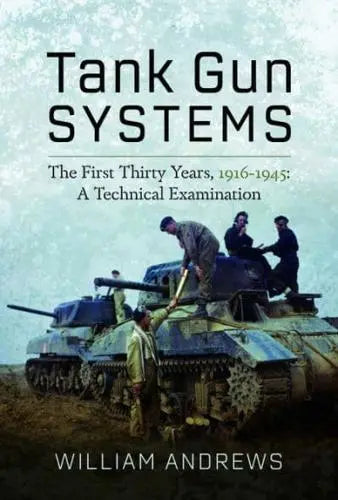Tank Gun Systems: The First Years, 1916 to 1945
Usually shipped within 24 hours
UK deliveries from £5.95
Delivery & Returns
Delivery & Returns
We use the Royal Mail, DHL Express or UPS for our customers. For UK addresses, deliveries under 10kg are a standard £4.95 via Royal Mail Tracked 48 Service. For orders over 10kg and overseas customers, postage is calculated for you at checkout once you have entered your postal address. This price, does not include any potential custom charges that may apply, depending on the product or destination, as every country has very different import duties / taxes. Online exclusive products (such as trainers) will be delivered to you directly from the printer, separate from other items in your order, but your postage fee covers ALL items in your order.
If you are unhappy with your purchase, please email shop@tankmuseum.org within fourteen (14) working days of receiving your goods, and return it to us at the address below, in its original condition, unopened (with any seals and shrink-wrap intact) and we will issue you a full refund or replace it. Goods must be returned at your own cost. If the item is faulty, you do not need to return it, we will send you a replacement free of charge.
Description
Description
By William Andrews
Hardback
Much has been written about the use of tanks in battle. Little, however, has appeared about the gunnery systems that are at their core. This book describes and examines the main gun systems of medium and heavy tanks from first use in 1916 in World War I to those fielded in numbers to the end of World War II in 1945, including tanks of the interwar period.
Specifically considered are guns of a calibre greater than 35 mm, which have been deployed in numbers greater than 100\. The emphasis is on guns mounted in turrets on heavier tracked armoured fighting vehicles (greater than 15 tonnes) which were considered tanks. There are, though, exceptions, in that the naval 6 pounder guns in First World War British tanks, as well as the 75 mm guns in French medium tanks of the same period (all turretless) are included.
The treatment of gun systems includes sighting and fire control equipment, gun laying equipment, mounts and the array of munitions fired, as well as the actual gun, including its, barrel, cradle, breech, firing mechanism, sights and recoil system. Related to this are issues of gun handling (loading and unloading), ammunition design and rates of fire. Also examined are the maximum impulse and energy generated by firing some of the munitions available that must be absorbed by the gun recoil system.
![Tank Gun Systems: The First Years, 1916 to 1945 Book [variant_option4]](http://tankmuseumshop.org/cdn/shop/files/9781399042352.webp?v=1748337832&width=1214)

![Tank Gun Systems: The First Years, 1916 to 1945 Book [variant_option4]](http://tankmuseumshop.org/cdn/shop/files/9781399042352.webp?v=1748337832&width=88)
![Christmas Tank Museum Wrapping Paper - Two sheet pack Wrapping Paper [variant_option4]](http://tankmuseumshop.org/cdn/shop/files/DSC2318.jpg?v=1759225755&width=176)

![Tank Gun Systems: The First Years, 1916 to 1945 Book [variant_option4]](http://tankmuseumshop.org/cdn/shop/files/9781399042352.webp?v=1748337832&width=640)



